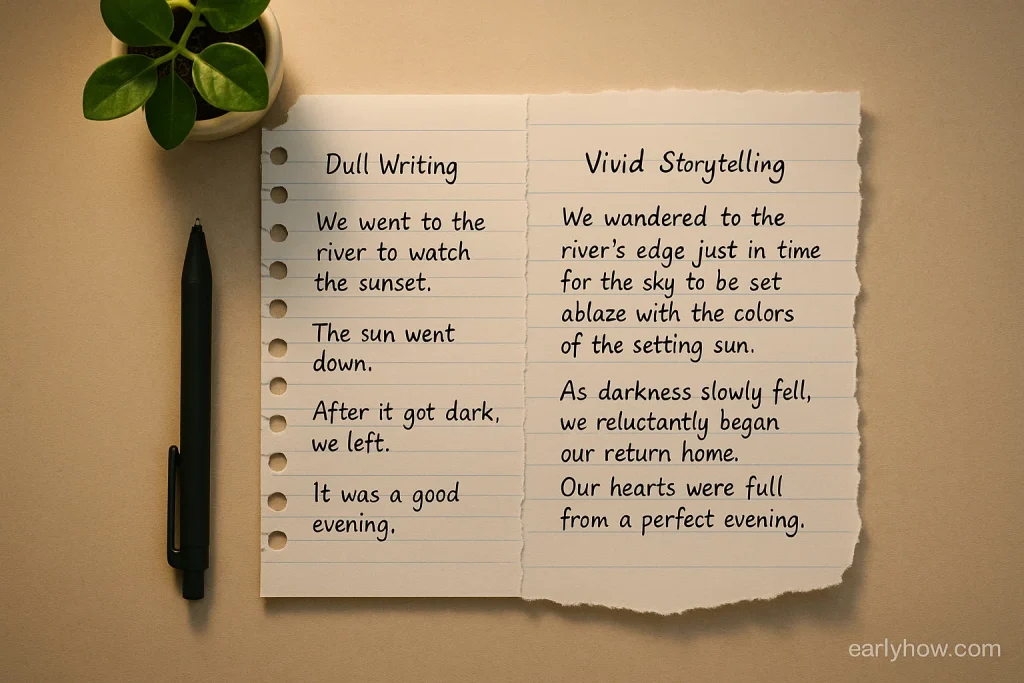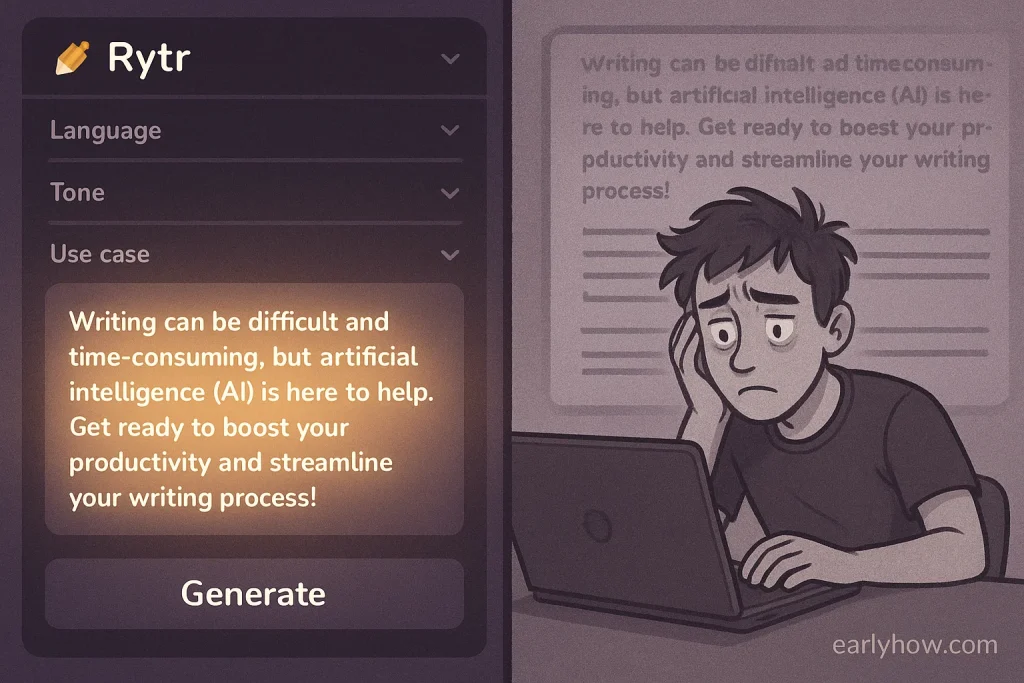Sudowrite was always described to me as “the AI tool for novelists.”
But I’m not a novelist. I’m a content marketer, blogger, and sometimes-product-describer.
So I never gave it much thought—until last week.
What started as a curiosity turned into one of the most creative experiences I’ve had with any writing tool. Over seven days, I tested Sudowrite on story hooks, blog intros, creative rewrites, and even metaphors. What happened surprised me.
Some results were pure magic. Others? A little too dreamy.
→ Want to see how Sudowrite stacks up against others? Check out our Best AI Writing Tools for 2025 guide.
I wrote this for the curious creative who wonders: Is Sudowrite just for fiction writers—or can it enhance the way I write anything? Let’s unpack what I discovered.

4 Lessons I Learned Using Sudowrite AI for a Week
Lesson #1: It Turns Bland Text into Creative Gold
The first thing I tried was Sudowrite’s “Rewrite” feature.
I dropped in a basic paragraph about productivity. It came back with vivid imagery, metaphors, and emotional beats that felt… alive.
Insight:
If you write flat copy and want it to sparkle—Sudowrite delivers. It’s like handing your work to a poetic editor with no ego.
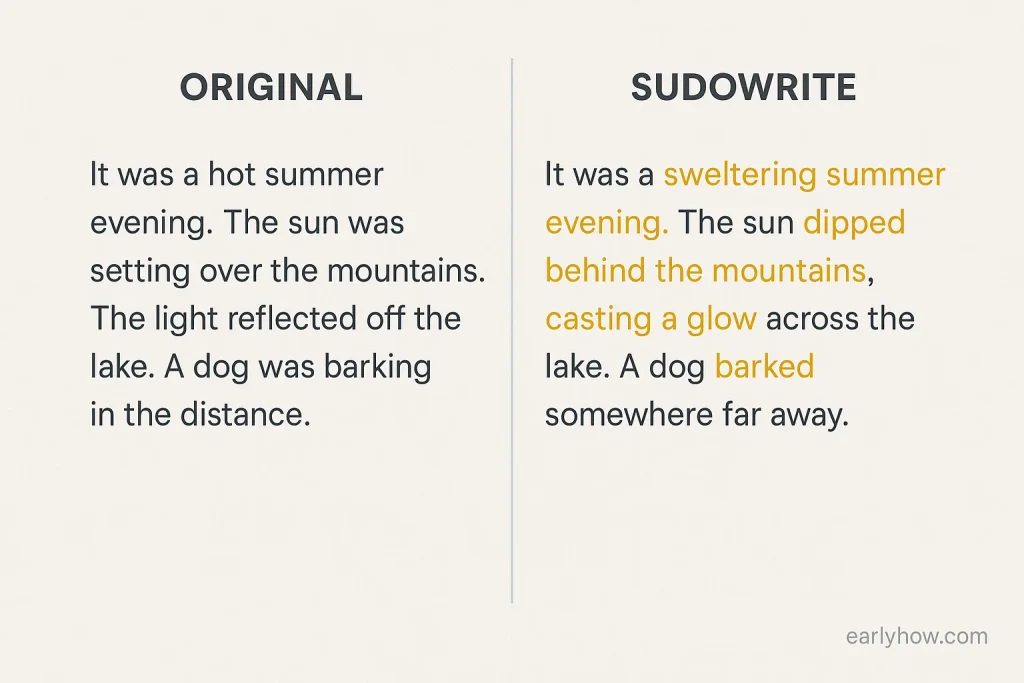
Lesson #2: The ‘Describe’ Feature Is Wildly Useful
I tested Sudowrite’s “Describe” feature by writing: “She opened the door.” What it returned was five detailed, cinematic versions of that moment.
Suddenly, I saw how useful this was for product copy, story intros, or even UX microcopy. This wasn’t just for fiction.
Insight:
Sudowrite can expand flat sentences into rich scenes—perfect for blog openings, metaphors, and emotional framing.
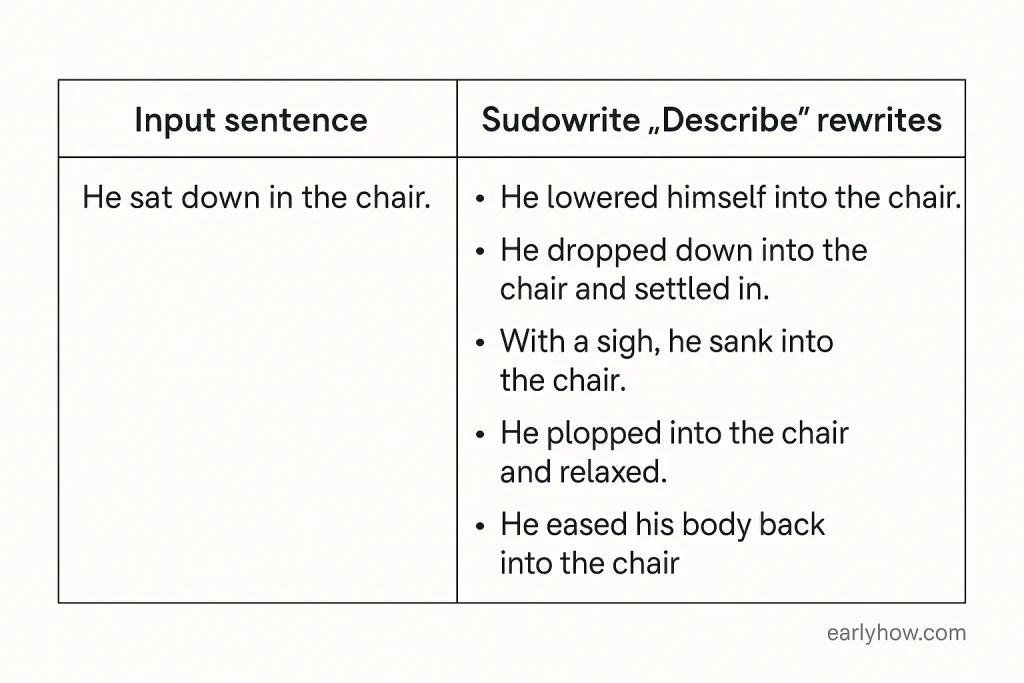
Lesson #3: It’s Not Great for Structure or SEO
By Day 4, I tried creating full blog outlines. That’s where it slipped.
The flow was abstract. The structure meandered. I couldn’t get it to follow SEO logic or H2/H3 hierarchy.
Insight:
Sudowrite is incredible at creativity, not structure. Use it to make lines shine—not to build organized frameworks.
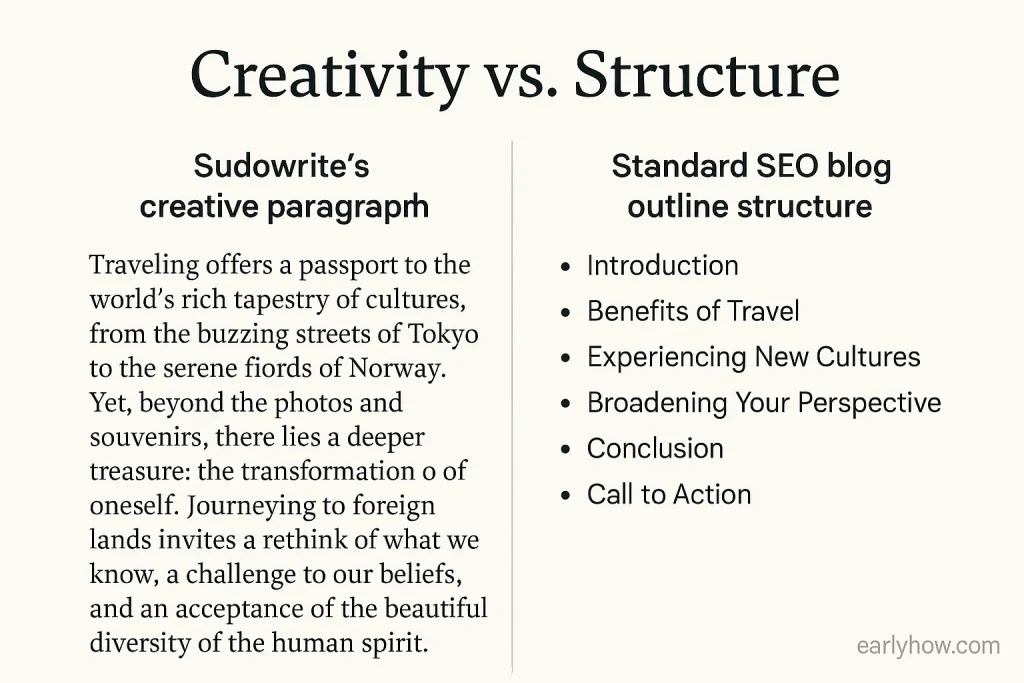
Lesson #4: It Helped Me Rediscover Writing Joy
On the last day, I used Sudowrite to write a farewell email to a client I enjoyed working with. It helped me shape the message with just the right emotion.
That’s when it hit me: I wasn’t using it to write faster—I was using it to write better.
Insight:
If you’ve burned out from robotic writing tools, Sudowrite might restore the joy. It’s less about automation and more about inspiration.

FAQs
Q. Is Sudowrite only for fiction writers?
A. No. It’s great for anyone who wants to add creativity or metaphor to their writing.
Q. Can Sudowrite be used for SEO content?
A. Not effectively. It’s better for rewriting, describing, and tone enhancement.
Q. Is Sudowrite beginner-friendly?
A. Yes, though the creative outputs may require a learning curve if you’re used to rigid writing tools.
Final Thoughts
After a week with Sudowrite, I wouldn’t use it for blog structure or SEO—but I’d absolutely use it for every intro, hook, or emotional close I write.
It’s not a utility tool. It’s a writing companion.
Want to compare Sudowrite with other tools?
Check out our full AI Writing Tools Comparison for 2025.
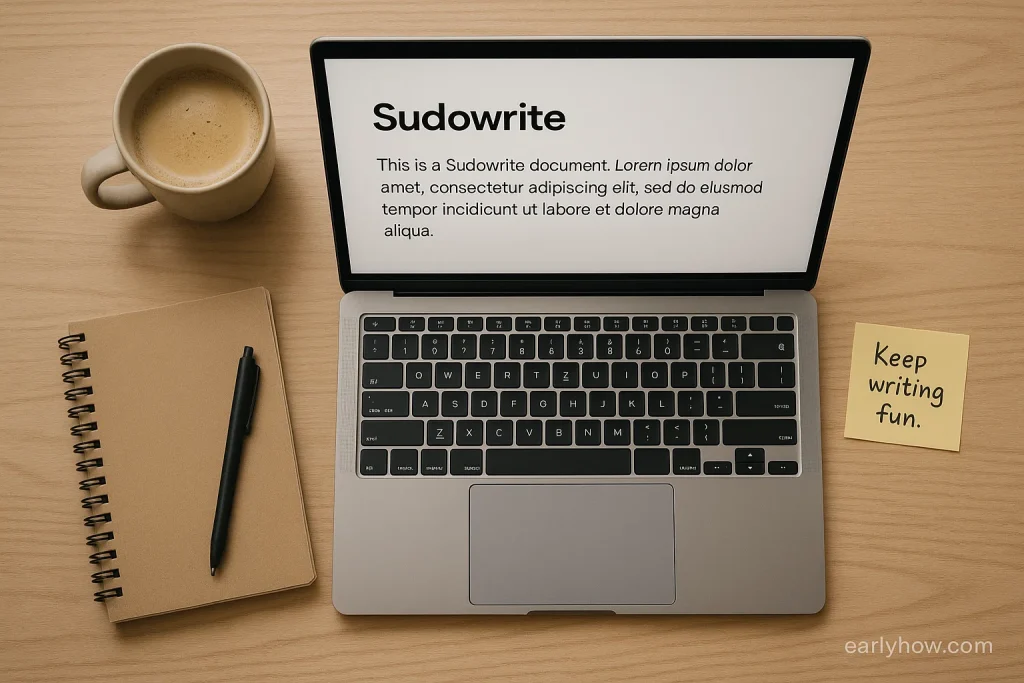
Comment Prompt
💬 What about you?
Have you tried Sudowrite—or been curious but unsure? What would you use it for if you had it right now? Share your story below—I’d love to hear it.

